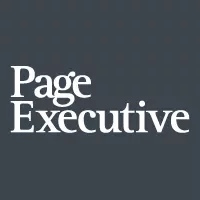Looking to hire your next leader?
Get in touch with one of our consultants now to discuss your leadership talent requirements.


More business leaders are realising that diversity and inclusion works best when it seeps into every pore of organisational culture.
Diversity and inclusion are old friends for forward-thinking organisations. Hiring candidates from a spectrum of backgrounds and mindsets injects new perspectives and capabilities into teams, and often significantly boosts creativity – and profits.
Sample this. If every country in the world moved rapidly towards bringing about greater gender parity in their workforce, as much as $12 trillion could be added to the global GDP by 2025, reports McKinsey Global Institute’s Women in the Workplace Report, an annual diversity and inclusion study. That is an 11% increase in the global GDP.
Addressing only the gender diversity aspect of D&I is expected to have a positive impact on revenues. Businesses stand to benefit even more when all aspects of D&I are given their due in the company’s hiring and employee welfare practices.
Businesses, too, mobilised by the younger generation’s passion, have paid greater attention to their values of equality and fairness. A genuine leaning-in towards others’ lived experiences has brought the spotlight onto businesses’ diversity hiring practices. Hiring for diversity ‒ irrespective of ethnic group, self-perceived gender, sexual orientation, nationality, disabilities and religion, among others ‒ has become a hot topic. But D&I goes much further than the post-interview handshake…
KEY TAKEAWAYS
Diversity and inclusion must be built into the DNA of today’s companies if they want to attract and retain the best talent. Businesses will benefit from bringing openness and flexibility to their hiring approach, while the equality-driven leaders of tomorrow will thrive on belonging and feeling valued.
As the conversations around equity and wellbeing gain momentum, forward-facing leaders understand that diversity and inclusion mean a serious mindset and culture shift towards making employees feel included, heard and valued. Companies need to invest time and attention into understanding their employees’ demographic base and educating all levels of leadership and workforce on what inclusion truly means. This includes providing empathy training and learning how to catch (and correct) bias in everyday work and life.
Allyship Training is a good example of a workshop that meets these needs. Implementing D&I includes first understanding the true spirit of inclusion, and then applying it by listening to employees, and adjusting the tone of the communication, the approach and the company culture. Fostering a sense of belonging and pride in being unique leads to diversity and inclusion being mutually celebrated. Companies should also put in place redressal mechanisms with legal and emotional support.
Agnieszka Kulikowska, Senior Partner Poland and leading the D&I practice for Europe, explains that a top-down and bottom-up approach can be effective in empowering people to speak up, engaging them and putting their best ideas into action: “The example should come from the top, with sponsors appointed to D&I pillar groups – like women, parents, LGBT, people with disabilities – to let people know the company is treating these professionals with adequate seriousness. Employees can then join the groups and committees they identify with and propose initiatives that will drive real change in processes and the perception of minorities.”
The example should come from the top, with sponsors appointed to D&I pillar groups – like women, parents, LGBT, people with disabilities – to let people know the company is treating these professionals with adequate seriousness. Employees can then join the groups and committees they identify with and propose initiatives that will drive real change in processes and the perception of minorities.
Agnieszka Kulikowska, Senior Partner
Diversity as a term primarily includes age, race, ethnicity, gender, disability and sexuality. Businesses need to understand it as more than just a fashionable social construct so that they can create a deep culture of diversity, an internalised way of doing business.
“Unfortunately for organisations that want a quick fix on diversity hires/quotas, they focus on ‘visible’ diversity such as gender and race. Diversity is so much more than the physical, but with legislation such as the gender pay gap, hiring or promoting more females ends up being a key focus to looking diverse. Discrimination can affect all groups of people, and the whole point of having a D&I agenda is to create an inclusive environment where every individual feels part of the culture,” says Catherine Osaigbovo, Partner HR and D&I UK.
It’s important to understand the definitions of both diversity and inclusion – and truly believe in them – before building a D&I programme or overhauling a company culture.
More than a 'nice to have'
While diversity is the presence of differences at the workplace, inclusion is the behaviour that embraces that diversity.
Early recruitment trends considered D&I goals a ‘nice to have’ and a ‘to be seen to have’. As businesses have evolved in their hiring practices, D&I has moved away from being just a quota-driven campaign to a deeper mindset about actively celebrating and making decisions based on different perspectives.
“An abundance of points of view in the same company gives the company different approaches to one same problem. It provides a better perspective for business,” says Natalia De Sanctis, Principal Argentina.
Various studies from recent years have shown a positive correlation between a diverse workforce and improved company profits. This study by the Wall Street Journal finds that diverse and inclusive work cultures offer a more competitive edge in the market. A further study by Boston Consulting Group found that companies with greater diversity experienced 19% higher innovation revenues.
Inclusion can also boost talent retention. Millennials and the generations to come have high D&I expectations from companies. A 2020 Diversity Hiring Survey by Glassdoor revealed that diversity was an important factor for 76% of jobseekers and employees. They evaluated a company’s diversity and inclusion practices during the hiring process. The onus is on companies to actively practise and communicate their diversity mindset.
“Companies must make sure that the programmes and initiatives that are being rolled out are actually making a difference, and driving change across the business. More engagement means more productivity. D&I is often an ‘HR subject’, but there is a need for it to be more aligned to the business objectives,” says Sarah Kirk, Global D&I Director.
Companies must make sure that the programmes and initiatives that are being rolled out are actually making a difference, and driving change across the business. More engagement means more productivity. D&I is often an ‘HR subject’, but there is a need for it to be more aligned to the business objectives.
Sarah Kirk, Global D&I Director PageGroup
Going on to explain how PageGroup measures inclusion, Kirk talks about the value of the insights gained from PageGroup’s proprietary surveys, which inform the data-driven consulting offered to clients. To stay abreast of D&I trends, PageGroup runs a D&I ambassadors’ network with a partner in every European country. The ambassadors meet regularly to discuss issues related to improving diversity and inclusion in business.
“Ultimately, it’s also about how culture can impact, support, retain and attract diverse talent,” Kirk adds.
The hiring process starts with an open discussion between the recruiter and the client. “No matter what the role is, the focus of the discussion, when hiring talent, shouldn’t only be about gender, age, nationality, or other differences. It is advisable that diverse candidates are included in every professional search, even if the client doesn’t specifically request it,” says De Sanctis.
Bringing greater diversity to the workspace starts with questioning inherent biases, and how they limit our work experience. Companies will need to set the bar higher – and broader – for their hiring expectations. Here, flexibility and keeping an open mind can go a long way.
Sometimes, all the way to the CEO.
KEY TAKEAWAYS
Diversity and inclusion must be built into the DNA of today’s companies if they want to attract and retain the best talent. Businesses will benefit from bringing openness and flexibility to their hiring approach, while the equality-driven leaders of tomorrow will thrive on belonging and feeling valued.
More business leaders are realising that diversity and inclusion works best when it seeps into every pore of organisational culture.
Get in touch with one of our consultants now to discuss your leadership talent requirements.

Choose your country from the list below to complete the brief form:


